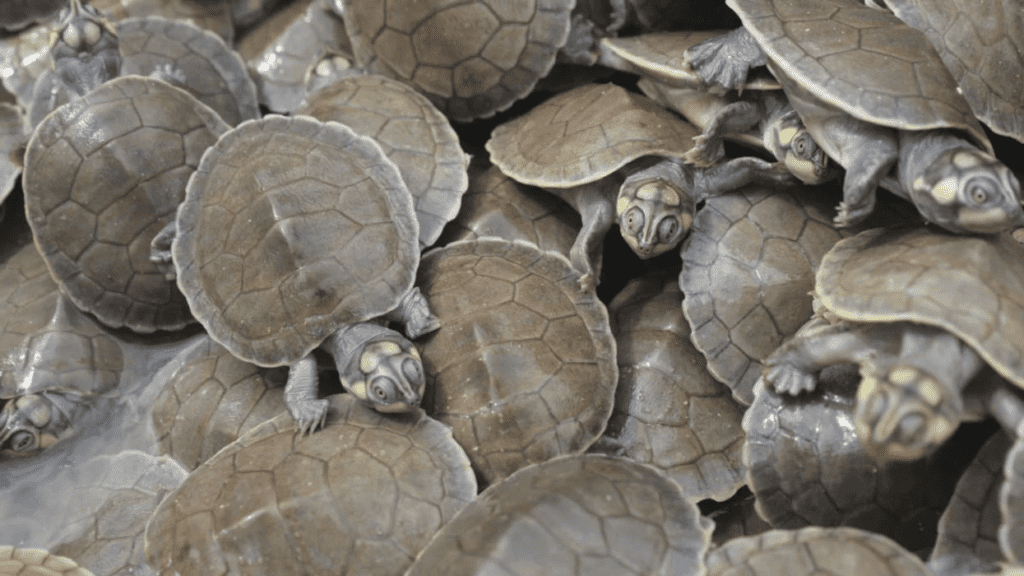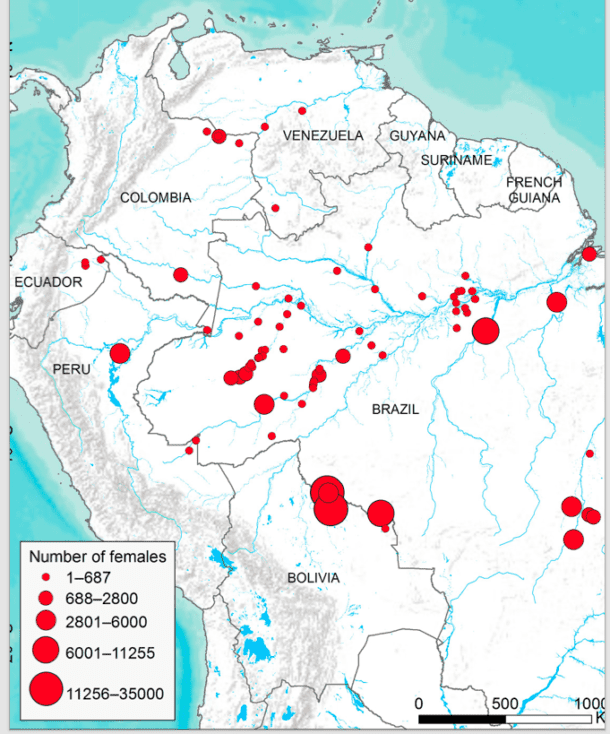
The giant South American river turtle (Podocnemis expansa) is a large semi-aquatic turtle with a flattened oval-shaped carapace that is slightly wider at the rear. But what makes it special is its peculiar strategy in order to reduce the impact of predation on its young. Instead of running from predators or developing camouflage to hide from them, these turtles simply spawn in very great numbers at the same time on river beaches. While many hatchlings perish once they leave their nesting grounds, their sheer numbers help to dilute predation.
Now, researchers at the World Conservation Society (WCS) in Brazil have shared rare footage of a mass turtle hatching, showing tens of thousands of tiny turtles — known as charapa in Peru and Ecuador, arrau in Venezuela, and tartaruga-da-Amazôni in Brazil — spawning on the sandy beach along the Purus River in Brazil, a tributary of the Amazon, located in the Abufari Biological Reserve.
Females can travel up to hundreds of kilometers from the lakes and rivers they usually occupy to nesting beaches to lay eggs. After nesting, the females don’t leave, as we see with other turtle species. Instead, they wait for their eggs to hatch and depart together with the hatchlings to their aquatic habitats. This strong motherly bond is unique among turtles.

After their explosive synchronized hatchings, the tiny turtles start their dangerous migratory journey. On the way, many get picked off by predators such as the coati (Nasua nasua), crab-eating fox (Cerdocyon thous), Tegu lizards (Tupinambis teguixin), and birds such as vultures, caracara (Polyborus plancus) and jabiru (Jabiru mycteria) eat the eggs and juveniles, whereas caimans, piranhas and other carnivorous fish prey on the young turtles that reach the river. Jaguars are the only known natural predators of the adults.

However, the greatest predator of the South American river turtle is represented by humans. They are considered a prized delicacy in local cuisine, which means these turtles are often heavily harvested despite it being illegal.
In 2014, researchers from Peru, Ecuador, Brazil, Colombia, and Bolivia performed the largest range-wide survey of South American river turtles in Balbina, in the Brazilian state of Amazonas. The study, which appeared in the journal Oryx, registered more than 147,000 females living in protected or managed areas.

“It is good news that there are still large numbers of turtles in the Amazon and Orinoco basins, and that there is a large group of people and communities concerned with and investing in their conservation,” said Germán Forero, the science director at Wildlife Conservation Society (WCS) Colombia and lead author of the study. “This represents a great opportunity for the species. Many communities want to preserve it for its use over time, as the [arrau] represents part of their diets and culture.”
However, the researcher was also cautiously optimistic, highlighting the fact that these numbers only reflect protected or managed females. As such, females living in unprotected areas may be doing much worse. The problem of turtle trafficking is still a major problem, which will only be amplified by economic uncertainties due to COVID-19.
Other threats to the species include the flooding of beaches caused by hydroelectric dams and mining operations near turtle habitat.


